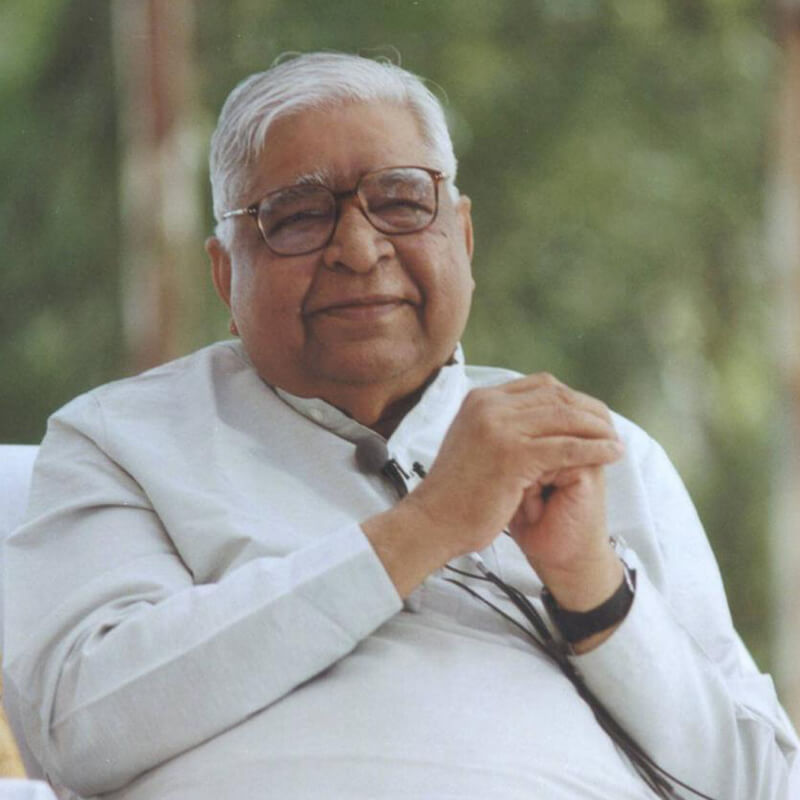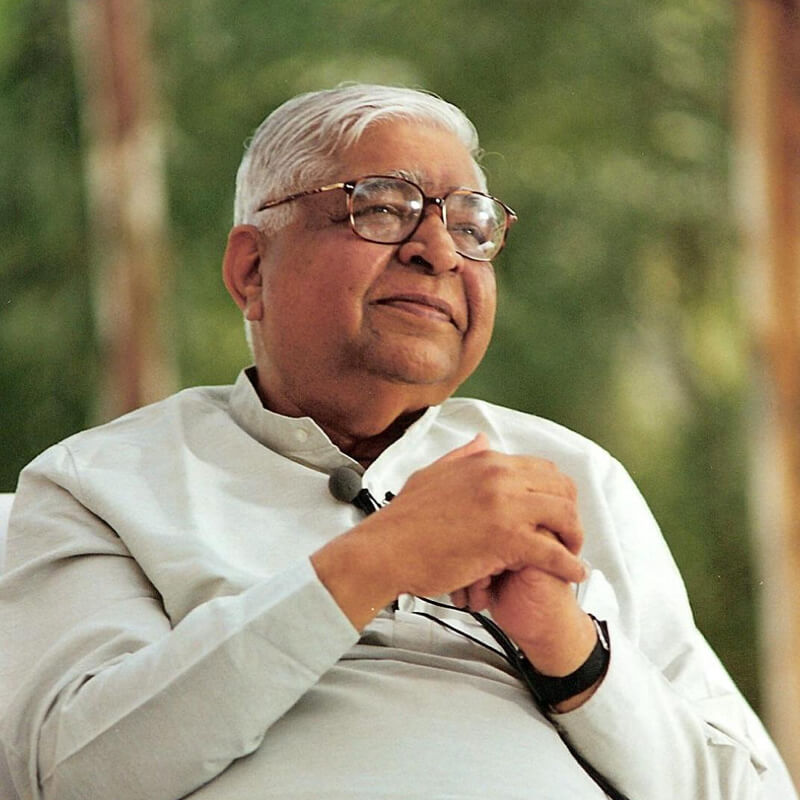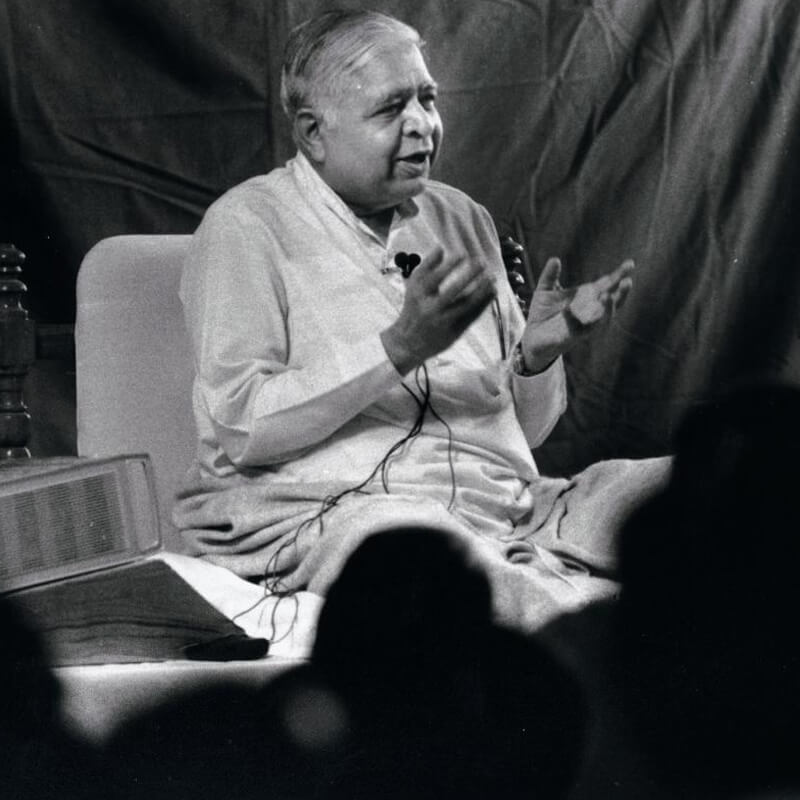(The following discourse is adapted from the third in a series of 44 public talks broadcast on Zee TV )
To learn Vipassana, the technique of purification of the mind, it is necessary to go to a Vipassana meditation centre. This technique can be learnt only in a conducive atmosphere. If one wants to learn to read and write, one has to enrol in a school. To keep the body healthy and strong, one has to go to a gymnasium. To learn yoga and prānāyāma, one has go to a yoga school. Similarly, to learn this Vipassana technique, the quintessence of the Buddha’s teaching, one has to go to a Vipassana meditation centre. It is not necessary to stay in a school or gymnasium or yoga school day-and-night. It is sufficient to learn the technique and then to practise it at home. But to learn the technique of Vipassana, at least in the beginning, one has to stay in the meditation centre for ten days.
If the purpose of meditation is merely to concentrate the mind, one may learn a meditation technique based on a mantra or an image as an object of concentration from some guru and practice it at home. Such a technique may calm the mind, concentrate the mind, and may even purify the surface level of the mind. But Vipassana does not merely purify the surface part of the mind. It is a deep surgical operation of the mind and purifies the mind at the deepest level, where defilements arise and multiply. These are defilements that one has accumulated in the depth of the mind over innumerable lifetimes. Those who do not believe in past lives have accumulated so many defilements even in this lifetime. The mind has become a prisoner of the habit-pattern of generating defilements in the depth of the mind. It is such a great bondage. One has to liberate the mind from this bondage and change its nature of continuously generating defilements. A deep surgical operation of the mind is needed to achieve this purpose.
When one becomes physically ill, one goes to a hospital that is clean and hygienic. If surgery is necessary, one has to go to an operation theatre that is completely sterile. Vipassana is a serious operation on the mind. Therefore, one can learn it properly only in an atmosphere that is free from any kind of pollution not only from atmospheric pollution but also from the pollution generated by the defilements of the mind.
These Vipassana meditation centres have existed since ancient times and also exist today. The environment in a centre is kept very pure. There is abundant greenery, and no physical pollution of any kind. There is peace, silence and an atmosphere conducive for meditation. And most importantly, there is no activity of any kind other than Vipassana in these meditation centres. As only Vipassana is practiced, the entire centre vibrates with the vibrations of pure Dhamma. So it is an ideal place to go for the first surgical operation on the mind. In addition, there are experienced and authorised people in a Vipassana centre who assist in this operation, in teaching this technique. It is not proper to try to learn this technique on one’s own.
Vipassana is not complicated; it is a very simple technique. One may get the impression that one can start practicing it after merely listening to such discourses or reading a book. But I wish to caution you. Vipassana is an extremely serious task, an extremely delicate task. Once, at least for the first time, one should learn this technique in a conducive atmosphere for ten days, under the guidance of some knowledgeable, experienced, authorised person. After that, everyone is one’s own master.
At home, it is not possible to meditate continuously for long hours. Therefore, the operation is not as deep at home. After learning Vipassana at a centre, one can practice Vipassana in the morning and evening at home. Whenever the need arises for another deep operation on the mind, one can again go to a Vipassana centre.
There is one more reason why Vipassana should be learnt in a meditation centre. The aim of the technique is to develop a pure mind. So during the ten days when Vipassana is being learnt in the centre, one practices sīla (morality) without breaking it in any way: one does not kill, one does not commit sexual misconduct but maintains celibacy for ten days, one does not lie, one does not steal, one does not take any kind of intoxicant.
One understands that in order to live a life of morality, one has to gain control over the mind. If one cannot control the mind, how can one become virtuous? But one can learn this technique only while living a life of morality. So a great difficulty arises. To live a life of morality one has to gain control over the mind. The mind has to be purified. To master the mind, to purify the mind, one’s life has to be a life of morality. Should one keep the horse in front or the cart in front? Should morality come first or should concentration and purification of mind come first?
To solve this problem, the wise teachers of our country established this tradition of going to a meditation centre to learn Vipassana. One is able to practice all the five sīlas there, meaning one does not do any vocal or physical action that disturbs the peace and harmony of others. One should not do any action that causes harm to others. How? The atmosphere of the meditation centre, the discipline and heavy daily programme of a ten-day course is such that it is easy to maintain sīla. The student is so busy from four o’clock in the morning to nine o’clock at night that there is no opportunity to break sīla. In order to avoid lying and wrong speech, the meditation centre has one more rule: for the duration of the course one must maintain silence. There should be no communication with fellow students. Of course, one may talk to the teacher or guide to seek clarification about the technique, or speak to the management about any material problems. However, even while talking to them, one should remain very attentive not to break one’s sīla. One should not exaggerate or hide anything. In this way, even the sīla of not telling lies can be easily maintained during the course.
So sīla is maintained perfectly. The work of learning the technique begins on this foundation of perfect sīla. If the student works as instructed, progress is certain. But if the foundation of sīla is missing, the student will not progress.
During the time of the Buddha, there were many teachers, like some teachers today, who told their students, "What is the need for morality? Do whatever you wish to do. Enjoy yourself without restraint, indulge in sensual pleasures. Even then, I shall teach you a meditation technique that will give bliss!" Such so-called spiritual teachers attracted big crowds. People are always looking for the easy way out. If they can get exemption from the need for morality and still get bliss, what more do they want?
Such harmful delusions have no place in Vipassana, the true path of the Dhamma. The foundation of morality is absolutely necessary. One should understand why it is so necessary. After all, one has to operate on the mind. To merely fill the surface part of the mind with bliss is not the goal of Vipassana. One has to reach and purify the depth, the deepest part of the mind, where the defilements arise, where they are accumulated. It is a very deep operation. If the surface part of the mind is very disturbed, very agitated, it results in gross impure vibrations. These vibrations act as a barrier and prevent one from going to the depth of the mind.
Suppose one has to search for oil fields under the ocean-bed. During the monsoon, the search has to be stopped because it is not possible to do this work of searching in the depth of the ocean when there are high tidal waves. When the monsoon is over and the rain has stopped, the high tidal waves subside. Now it is possible to search for oil fields even though the tidal waves have not completely ceased. Similarly, there are waves of defilements in the mind. But when one breaks any sīla whether one kills or steals or takes intoxicants or tells lies or commits sexual misconduct there are such high tidal waves of impurities created on the surface part of the mind that one cannot go to the depth. If one has to work at the depth of the mind, a situation has to be created where even though there are waves of defilements, they do not multiply and cause such high tidal waves of impurities in the mind.
The entire atmosphere of the meditation centre is helpful in achieving this. The rules, the discipline, the timetable must be followed strictly. If one works with discipline, one gets the benefits. People come to a meditation centre not to enjoy a picnic or a ten-day holiday from the responsibilities of life, but to meditate, to remove the defilements in the mind by practicing extremely serious meditation. One has to work very seriously and continuously. Therefore, after understanding, accepting and following the rules, one begins to work earnestly.
What work does one do? The work starts by learning the technique of concentrating the mind. To concentrate the mind, one has to take the help of some object of concentration. There are many objects with the help of which one can practice to concentrate the mind. The Buddha, who discovered Vipassana, gave us an object that always remains with us. This object of concentration is with us from birth and continues until the moment of death. Our own breath keeps coming in, keeps going out, from the time of our birth and until the time of our death. Whether one is asleep or awake, sitting or standing, walking or travelling or eating or drinking, in every state, the breath is coming in, the breath is going out. This breath becomes our object of concentration. Natural, normal breath, as it comes in, as it goes out. One only has to observe it, and do nothing else. There is no need to do any exercise of the breath or to control the breath. Nothing artificial, only observation of the natural breath, as it is. If it is deep, one is aware it is deep; if it is shallow, one is aware it is shallow. If it passes through the left nostril, one is aware it is passing through the left nostril. If it passes through the right nostril, one is aware it is passing through the right nostril. If it is passing through both nostrils, one is aware it is passing from both nostrils.
Our only work is to observe, to be aware; that is all. This is not an exercise of controlling and regulating respiration. It is not prānāyāma at all.Prānāyāma has its own benefits but it is a totally different technique. It has nothing to do with Vipassana. In Vipassana, one just objectively observes, as it is, whatever truth about oneself is being revealed moment-by-moment. The technique is of pure observation; it is not an exercise of the breath. The breath comes naturally. Keeping the attention at the entrance of the nostrils, inside the nostrils, up to the inner passages of the nostrils, one observes the incoming and outgoing breath. The breath is coming in; the breath is going out. It is coming in, it is going out. One is not controlling it in any way. There is no need to make any change in it. If it is passing through the left nostril, there is no need to make it pass through the right nostril. If it is passing through the right nostril, there is no need to make it pass through the left nostril. If it is deep, there is no need to make it shallow. If it is shallow, there is no need to make it deep.
We observe the breath as it is yathā-bhūta-ñāña-dassana which means we are observing it with wisdom. The breath is coming in, the breath is going out. Whether it is passing through the left nostril, passing through the right nostril or passing through both nostrils, one is very attentive about its coming and going. One observes it objectively. What is objective observation? A person is sitting on the bank of a river. That person has no control over the flow of that river. He cannot make the river flow faster, nor can he make it flow slower. If the water of the river is dirty, it is dirty; if it is clean, it is clean. If there are high waves on the river, there are high waves. If there are no waves, there are no waves. The person sitting on the bank just observes the flow of the river. This is the current of the river; it is flowing. There is only objective, impartial observation. In the same way, there should be no attempt to control the incoming and outgoing breath. Focusing all attention at one place, one observes the breath objectively, impartially, and does nothing else.
There is awareness that the breath is coming in; there is awareness that the breath is going out. There is nothing else to do. There is nothing more to do. We only have to observe. What can be simpler than this? But whenever one is able to spare ten days for a Vipassana course, one will find that it is very difficult work. It is very difficult work indeed! One will not be able to observe even two breaths, before the mind wanders. It will be very difficult to be able to observe even two breaths before the mind runs away. The mind will run away repeatedly, the student will have to bring it back to the breath repeatedly.
Sometimes the student may become agitated with the fleeting, fickle nature of the mind that cannot remain still and observe even two or three breaths. The student may lament "Oh! What kind of a mind am I carrying? This is such an easy job that I have been given where I do not have to do anything. It is as simple a task as sitting on the riverbank and watching the flow of the river. In the same way, I have to focus my mind at the entrance of the nostrils and observe the flow of respiration. I only have to observe the flow of respiration. I do not have to do any labour or exercise. Why can’t I do such easy work?"
The student feels very irritated with the wandering mind. Then the teacher conducting the course will tell the student, "Oh, no, no! Do not get angry with yourself, do not get angry even with your mind. Anger is anger after all. Irritation is irritation. It will make you very miserable. You have come here to become free from this habit-pattern of the mind to get irritated. Just be aware, ‘At this moment my mind has wandered away.’ Just accept it. Then start work again in all earnestness."
The student again begins to observe the breath. Again it wanders. As soon as the student becomes aware, he again resumes observing the breath. "Oh, has it wandered again? Do not worry, again start observing the breath." As one continues to do this for one day, two days, three days, one will start experiencing the benefits.
Every Vipassana student has to work. The student who wants to progress on the path of pure Dhamma will have to exert much effort and work with a lot of patience and persistence. Nobody else can help the student. The only help that a person who has walked upon the path can give is guidance: "Do this. Walk on this path in this way."
One has to walk on the path oneself. As the student progresses on the path, he begins to realise, "Oh, there is a lot of happiness on this path. There is a lot of contentment on this path. There is a lot of peace on this path." Walking on this path, as one keeps becoming liberated from defilements, great happiness will arise, great contentment will arise. Whoever walks on the path of pure Dhamma experiences real happiness, experiences real peace, experiences full liberation from all misery.





